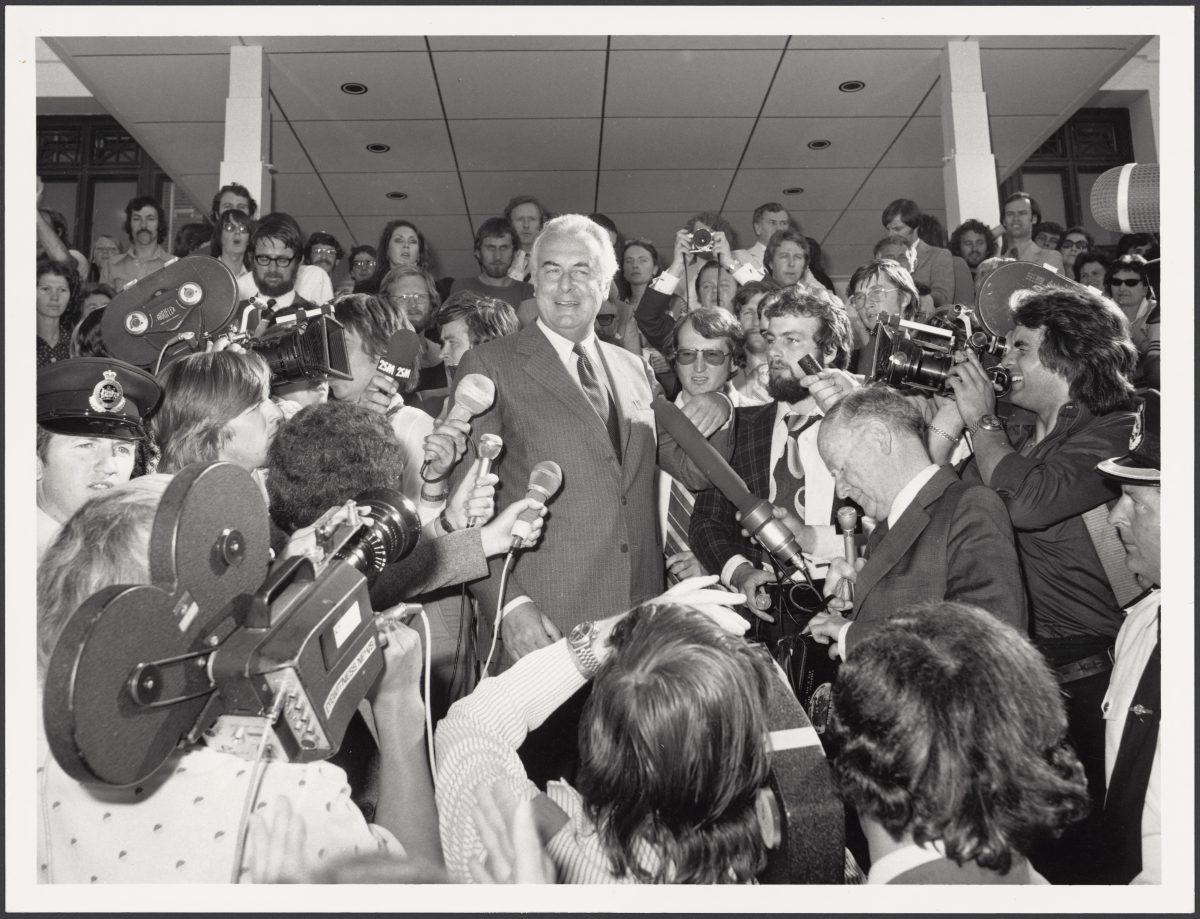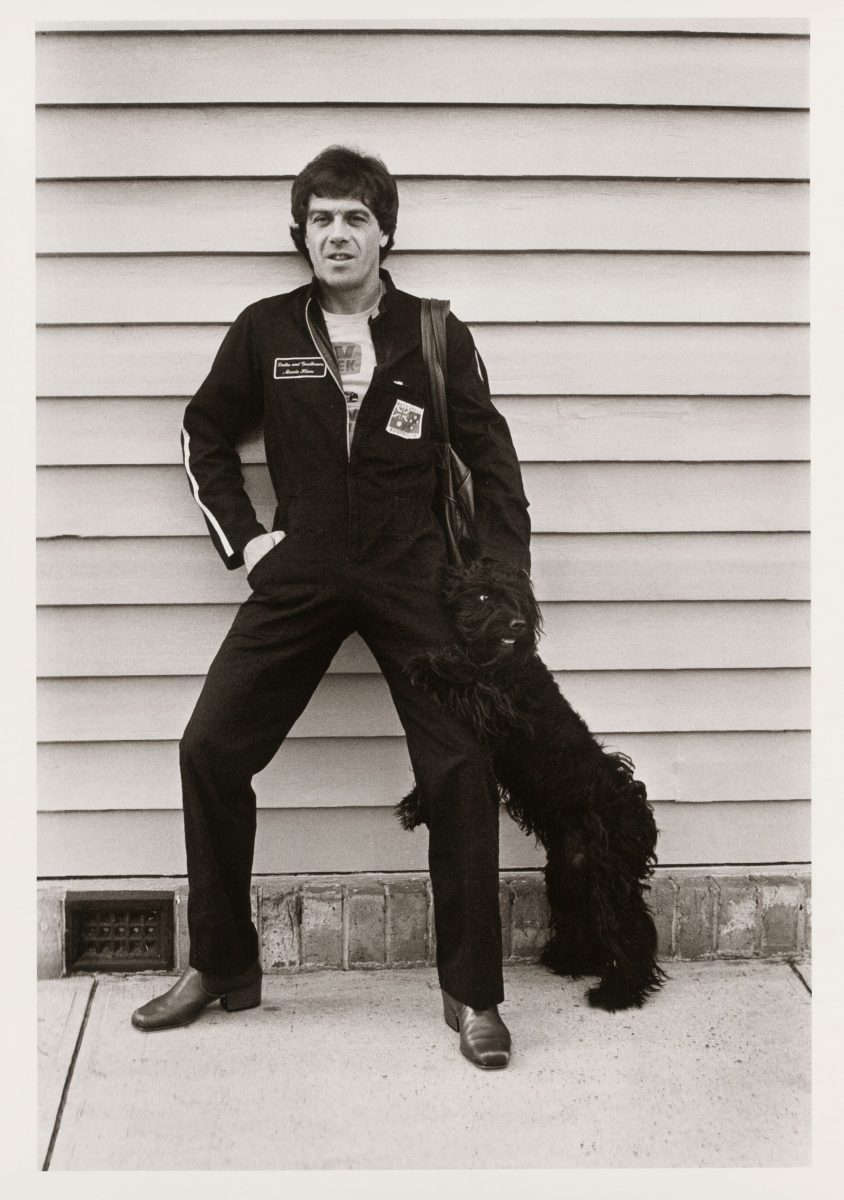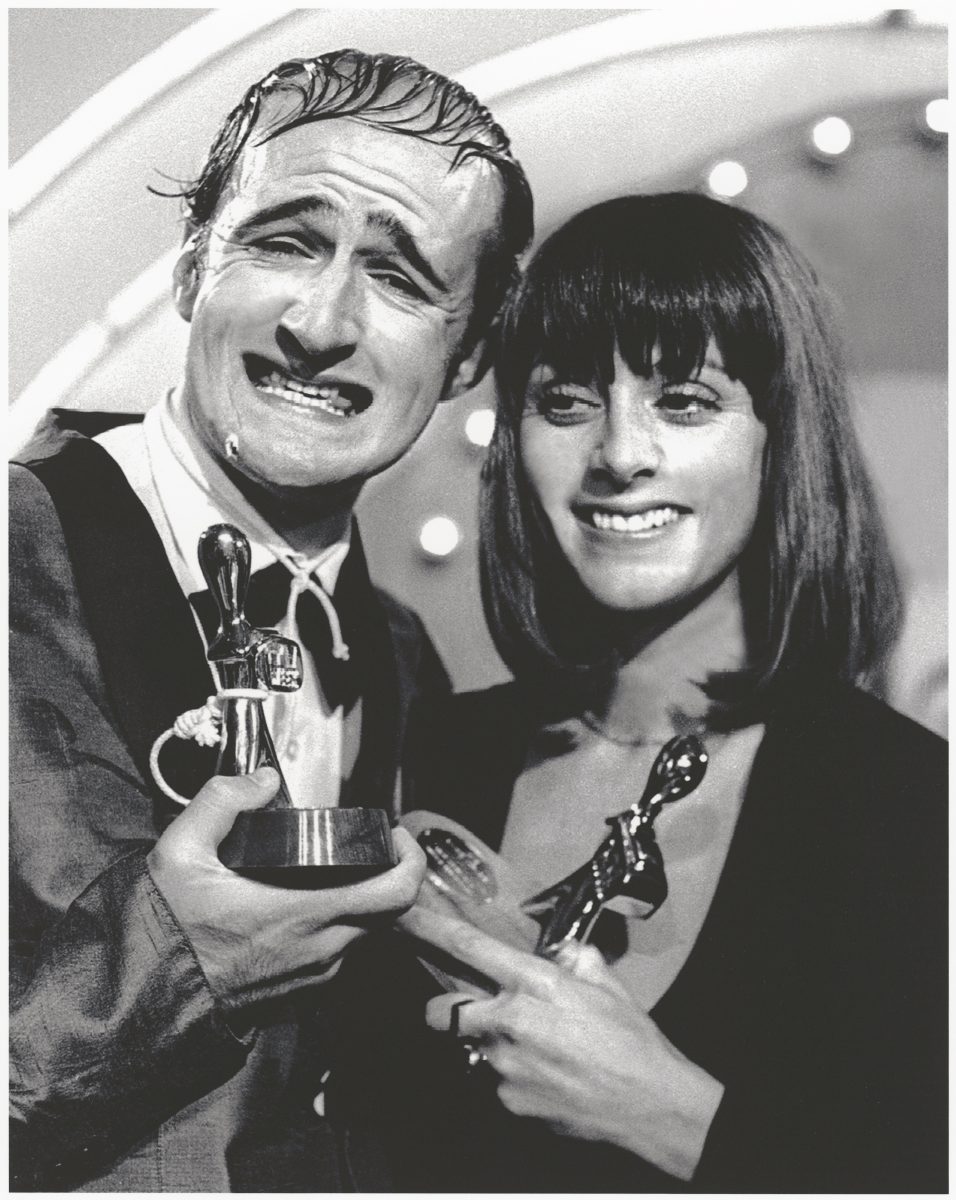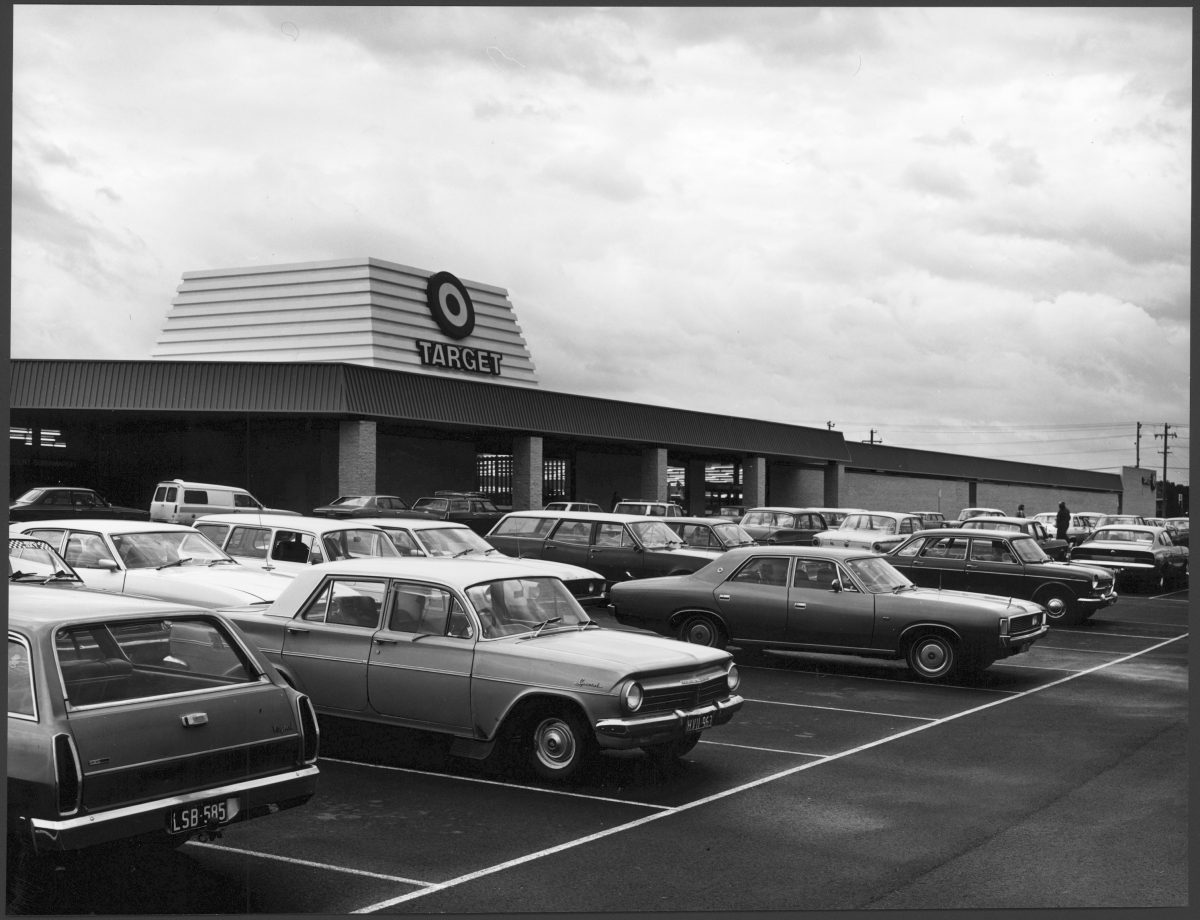
Gough Whitlam speaking on the steps of Parliament House, Canberra, 11 November 1975. Photo: NLA.
At the perspective of half a century, how do we remember life in Australia in 1975?
In terms of politics, it was a year that dashed the hopes and aspirations of a generation of young Australians with the dismissal of the Whitlam government. It was also the year in which America and its allies were defeated in Vietnam and South and North Vietnam became one country. Closer to home, Papua New Guinea became independent and conflict erupted in East Timor.
The haunting film Picnic at Hanging Rock was released onto an unsuspecting public, and Monty Python and the Holy Grail was promoted as the film that would set “the cinema back 900 years”. Jaws and The Rocky Horror Picture Show were also released.

Women on the march wave their placards at the International Women’s Day march, Melbourne, 1975. Photo: NLA (John McKinnon).
In sport, 1975 was the year that Dennis Lillee and the Australians won the home and away Ashes series, when he and the fellow paceman Jeff Thomson claimed 95 wickets across the two series. On the domestic front, the long-suffering Kangaroos in 1975 managed to finally secure a VFL premiership.
It was a time of mass movements, such as the substantial feminist demonstrations of International Women’s Day in 1975. It was also the time when Prime Minister Gough Whitlam symbolically handed back land to the Gurindji people at Wave Hill (Daguragu) in the Northern Territory.

Ian ‘Molly’ Meldrum, Prahran, 1978. Photo: NLA (Rennie Ellis).
Countdown launched its first colour broadcast in 1975 and Molly Meldrum emerged as a key player in the Australian music scene. Norman Gunston and Denise Drysdale triumphed at the Logie Awards.

Norman Gunston and Denise Drysdale at the Logie Awards presentation night, each with their Gold Logie, Melbourne, 1976. Photo: NLA (Bruce Postle).
The phenomenal holdings of the National Library of Australia allow the library to present this in-depth trip down memory lane with a mix of iconic images and unexpected treasures. These include the vibrant poster, The Vietnamese People have Won: Celebrate Tonight, City Square, various football, music and film posters, cigarette advertisements and wonderful photographs by leading photographers of the day, including Wolfgang Sievers, Carol Jerrems and Rennie Ellis.
Nostalgia, as always, is a distorting lens of history and fulfils the desire to reclaim the past where things were better in the ‘good old days’. The National Library exhibition does not attempt to deliberately sugar-coat our record of the past, but, because it is the past, our memory does this for it. Images of the Skyhooks, the young AC/DC and the ABBA craze somewhat disguise the age of anxiety and disappointment.
What characterised the 1970s to some extent was an age of hope, where there was hope that the voice of the people could achieve social change, and one could dream of a more just society and a better global order. The year 1975 was something of a watershed when dreams and illusions were dashed.
In 1995, the National Gallery of Australia held an epic exhibition with the title ‘1968’. That was a year of great promise, marked by revolution in the air and radical changes in art. The social unrest failed to take root and reactionary governments swept to power in many parts of the world. Back in 1975, it was also a time of hope that was followed by a period of disillusionment.
In 50 years’ time, how will we look back on 2025? Will it be with shock and horror and with a sense of shame, or will it be with pride?

Wolfgang Sievers, Target store, Maribyrnong, Victoria, 1975. Photo: NLA
1975: Living in the Seventies is on at the National Library of Australia until 1 February 2026, daily from 9 am to 5 pm. Admission is free.
Original Article published by Sasha Grishin on Region Canberra.


